 1983 Peugeot 205 I (741A/C) 3-door Dimensions, Size & Specs
1983 Peugeot 205 I (741A/C) 3-door Dimensions, Size & SpecsMeasurements of the 1983 Peugeot 205 I 3-door, engineered for optimal performance and comfort
| Dimensions | |
|---|---|
| Length: | 3705 mm145.9 in12.2 ft |
| Width: | 1572 mm61.9 in5.2 ft |
| Height: | 1373 mm54.1 in4.5 ft |
| Trunk Capacity: | 216-246 liter7.6-8.7 cu ft |
| Trunk Capacity (Max): | 546-564 liter19.3-19.9 cu ft |
| Weight Specifications | |
| Curb Weight: | 742-855 kg1636-1885 lbs |
| Maximal permitted Weight: | 1160-1330 kg2557-2932 lbs |
| Tire Specifications | |
| Rims Sizes: |
|
| Tire Sizes: |
|
The Peugeot 205 I (741A/C) 3-door hatchback, produced from 1983 to 1987, is a quintessential example of a compact European hatchback from the 1980s. Measuring 3705 mm (145.9 inches) in length, 1572 mm (61.9 inches) in width, and 1373 mm (54.1 inches) in height, the 205 I offers a compact footprint optimized for urban maneuverability and ease of parking, while maintaining a functional interior layout. The curb weight ranges between 742 and 855 kg (1636 to 1885 lbs), depending on the trim and options, with a maximum permissible weight varying from 1160 to 1330 kg (2557 to 2932 lbs). This lightweight design contributes to the car's nimble handling characteristics and efficiency.
Luggage capacity in the Peugeot 205 I 3-door varies from 216 to 246 liters (7.6 to 8.7 cubic feet) with all rear seats in place, providing adequate space for daily errands or small trips. Folding the rear seats expands the cargo volume significantly to between 546 and 564 liters (19.3 to 19.9 cubic feet), demonstrating the car’s versatility for carrying larger items or additional cargo.
The 205 I supported a range of wheel and tire options, employing rim sizes of 13, 14, and 15 inches. Tire specifications ranged from 135/80 R13 to 185/55 R15, allowing variations for performance and comfort suited to different driving needs. This variety of tires and rims also reflects the model’s adaptability to different road conditions and driver preferences.
As an iconic vehicle of its era, the Peugeot 205 I 3-door hatchback represents efficient design and practicality packed into a stylish and compact frame. Its size and weight specifications align well with the expectations for small family cars and urban commuters in the 1980s, making it a popular choice for drivers seeking economy without compromising usability.
Discover the standout features that make the 1983 Peugeot 205 I 3-door a leader in its class
Have a question? Please check our knowledgebase first.
The Peugeot 205 I (741A/C) 3-door hatchback has a length of 3705 mm (145.9 inches), a width of 1572 mm (61.9 inches), and a height of 1373 mm (54.1 inches). These compact dimensions reflect the car's design as a nimble and practical urban hatchback, ideal for city driving and easy parking.
The curb weight of the Peugeot 205 I (741A/C) 3-door ranges from 742 to 855 kg (1636 to 1885 lbs), depending on trim level and equipment. The maximum allowable weight, which includes passengers and cargo, ranges from 1160 to 1330 kg (2557 to 2932 lbs). This light curb weight contributes to the car’s agility and fuel efficiency.
With the rear seats in place, the Peugeot 205 I offers a luggage capacity between 216 and 246 liters (approximately 7.6 to 8.7 cubic feet). Folding the rear seats expands this capacity significantly to between 546 and 564 liters (19.3 to 19.9 cubic feet), allowing for larger cargo and versatile usage of the hatchback space.
The Peugeot 205 I (741A/C) supports a variety of rim sizes including 13, 14, and 15 inches. Corresponding tire sizes suited for this car include 185/60 R14, 185/55 R15, 135/80 R13, 165/70 R14, 165/70 R13, and 145/70 R13. The choice of tire and rim size can influence ride comfort and handling dynamics.
The Peugeot 205 I's compact dimensions make it highly suitable for fitting into a standard residential garage. With a length of 3705 mm (145.9 inches), width of 1572 mm (61.9 inches), and height of 1373 mm (54.1 inches), it leaves adequate clearance in most garages which are typically designed to accommodate vehicles up to around 5 meters (~16.4 feet) long and 2.5 meters (~8.2 feet) wide, making parking and maneuvering convenient.
The Peugeot 205 I (741A/C) did not have a direct predecessor as it effectively replaced the Peugeot 104 and other smaller models in Peugeot’s lineup. However, compared to the Peugeot 104, the 205 I was slightly larger, offering increased interior space and modern styling while maintaining a compact footprint. This size enhancement improved passenger comfort and practicality without compromising the agility required for urban driving.
In comparison to other popular hatchbacks from the 1980s, such as the Volkswagen Golf Mk2 and Ford Fiesta Mk2, the Peugeot 205 I (741A/C) is competitively sized but generally slightly shorter and narrower. The Golf Mk2, for example, measures approximately 4,020 mm in length, making the 205 I more compact. This smaller size contributed to the 205’s reputation for nimbleness and ease of parking, while still offering good interior space relative to its dimensions.
The relatively low curb weight, ranging between 742 and 855 kg (1636 to 1885 lbs), combined with compact dimensions, provides the Peugeot 205 I excellent agility and responsive handling. This lightness improves acceleration and fuel efficiency, making the car particularly enjoyable to drive in urban and sporty settings. The modest size also aids in maneuverability through tight city streets and parking areas.
With luggage space ranging between 216 and 246 liters (7.6 to 8.7 cubic feet) in normal configuration, and expanding up to 546 to 564 liters (19.3 to 19.9 cubic feet) with rear seats folded, the Peugeot 205 I offers versatile cargo capacity for its size class. This makes it practical for grocery runs, weekend trips, or transporting bulky items when the rear seats are folded down, enhancing its value as a daily driver and small family car.
Launched in 1983, the Peugeot 205 I marked a significant evolution for Peugeot’s small car segment. It introduced a modern, aerodynamic design with a more youthful appeal compared to its predecessors. Its compact yet roomy interior, efficient use of space, and lightweight construction established a new benchmark for hatchbacks in the 1980s. The 205's success influenced subsequent Peugeot models, reinforcing the importance of combining style, practicality, and performance in small cars.
Discover similar sized cars.
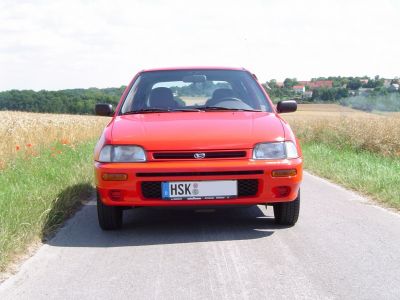
| Production: | 1993-2000 |
|---|---|
| Model Year: | 1993 |
| Length: | 3750-3780 mm147.6-148.8 in |
| Width: | 1620 mm63.8 in |
| Height: | 1390-1410 mm54.7-55.5 in |
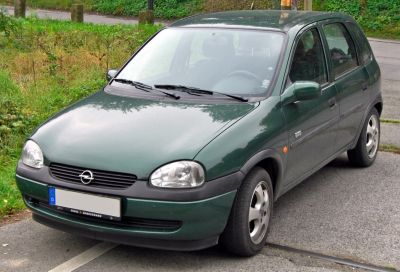
| Production: | 1997-2000 |
|---|---|
| Model Year: | 1997 |
| Length: | 3740 mm147.2 in |
| Width: | 1610 mm63.4 in |
| Height: | 1420 mm55.9 in |

| Production: | 1993-2000 |
|---|---|
| Model Year: | 1994 |
| Length: | 3740 mm147.2 in |
| Width: | 1610 mm63.4 in |
| Height: | 1420 mm55.9 in |

| Production: | 1993-2000 |
|---|---|
| Model Year: | 1993 |
| Length: | 3729 mm146.8 in |
| Width: | 1610 mm63.4 in |
| Height: | 1420 mm55.9 in |
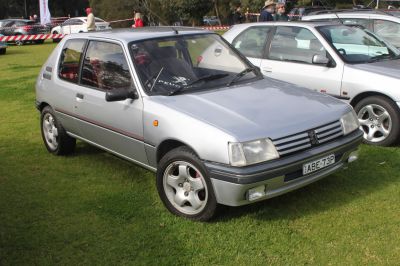
| Production: | 1987-1998 |
|---|---|
| Model Year: | 1983 |
| Length: | 3705 mm145.9 in |
| Width: | 1560-1572 mm61.4-61.9 in |
| Height: | 1355-1375 mm53.3-54.1 in |
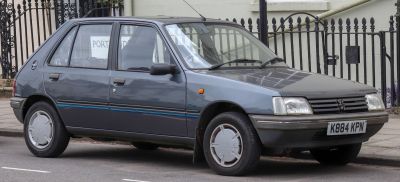
| Production: | 1987-1998 |
|---|---|
| Model Year: | 1987 |
| Length: | 3705 mm145.9 in |
| Width: | 1560-1570 mm61.4-61.8 in |
| Height: | 1355-1375 mm53.3-54.1 in |
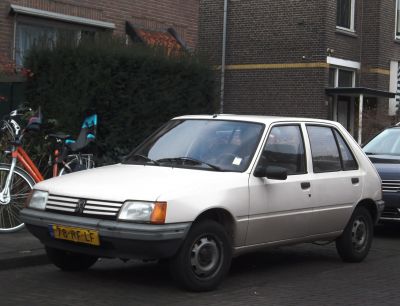
| Production: | 1983-1987 |
|---|---|
| Model Year: | 1983 |
| Length: | 3705 mm145.9 in |
| Width: | 1572 mm61.9 in |
| Height: | 1373 mm54.1 in |

| Production: | 1993-2000 |
|---|---|
| Model Year: | 1993 |
| Length: | 3740 mm147.2 in |
| Width: | 1610 mm63.4 in |
| Height: | 1420 mm55.9 in |
